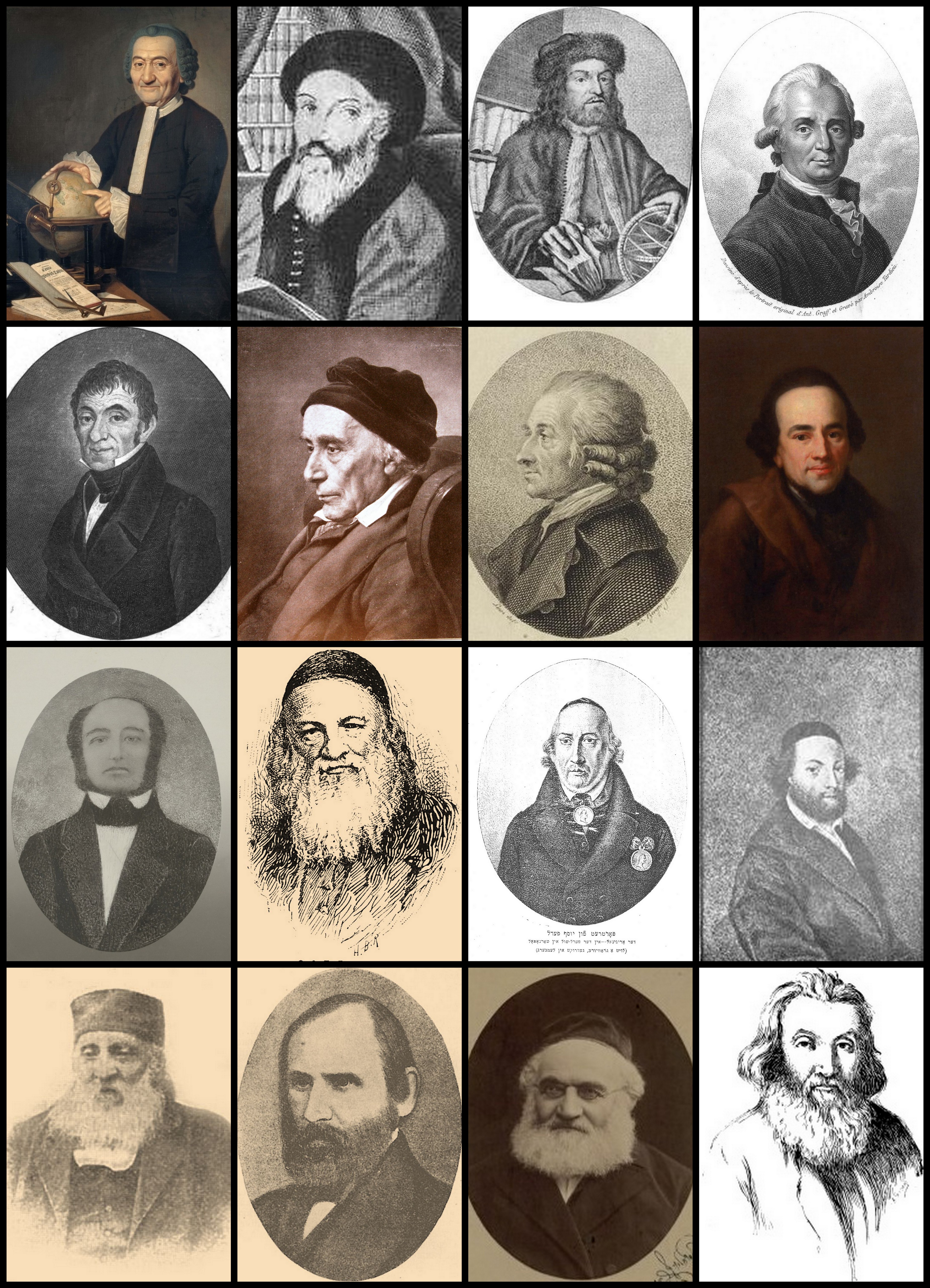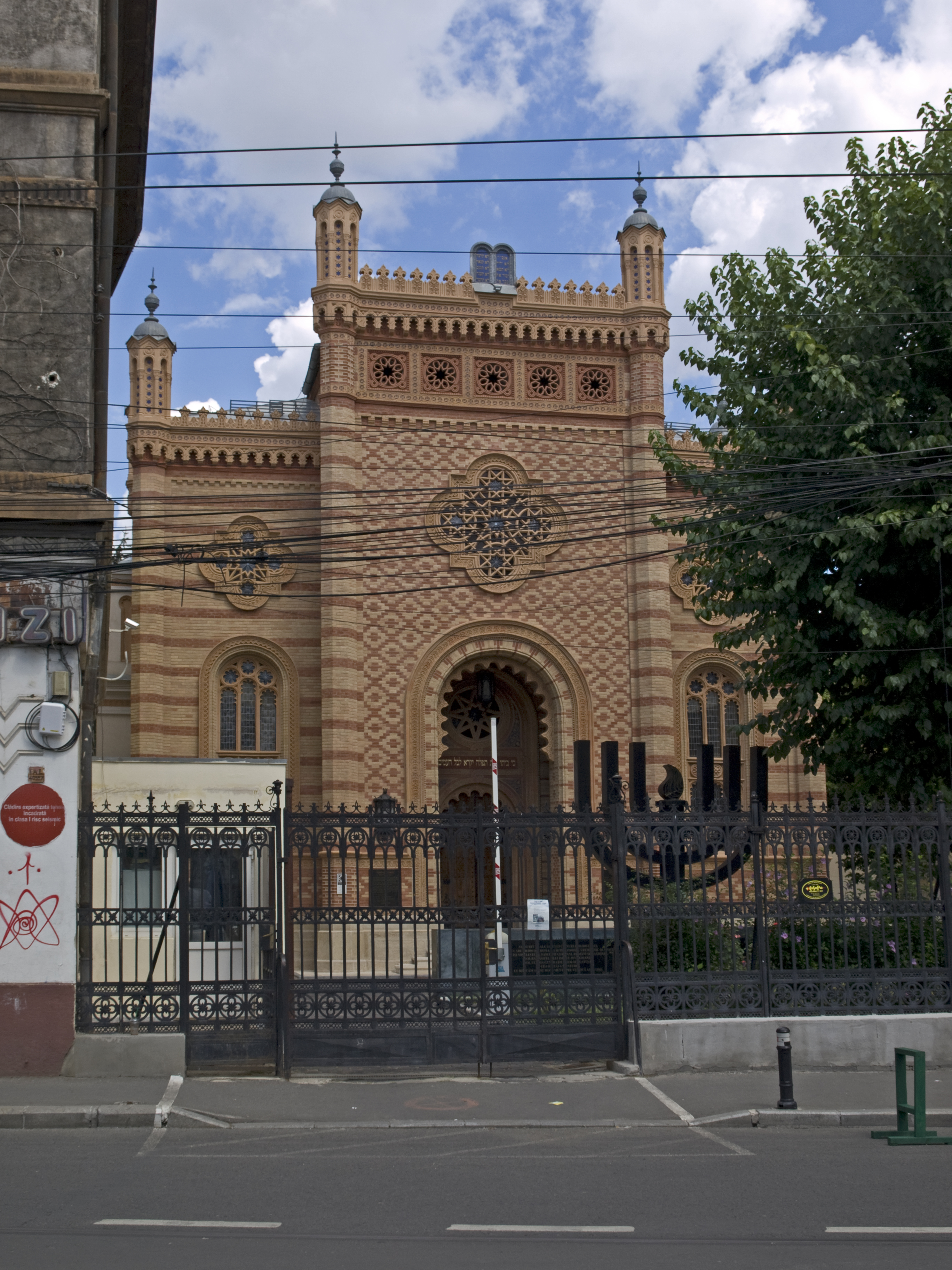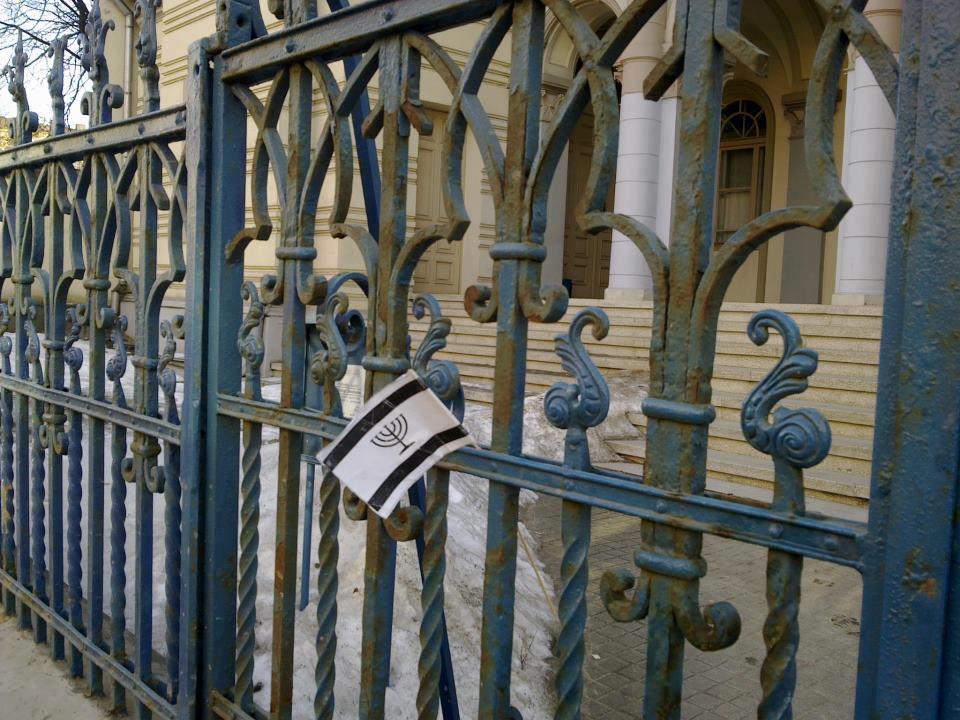|
List Of Choral Synagogues
Choral synagogues ( yi, Khorshul) were built in Eastern Europe, from Hungary to Russia. These synagogues represented the ideas of Jewish Enlightenment (''Haskalah'') and made certain reforms to the traditional Jewish customs (''minhag''). Often, they featured male choruses, conducted sermons in local languages (German, Russian, etc.), enforced order during services, decorated their interior, and placed pews facing eastern wall where the Torah ark was displayed (in traditionalist synagogues the bimah stood in the center of the room). However, the changes did not extend to religious beliefs and customs. Therefore, the differences between choral and traditional synagogues are more aesthetic. Many of these synagogues were either demolished or confiscated and repurposed for other uses, particularly in the Soviet Union by the Bolsheviks after the October Revolution. During the German occupation in the Second World War, many were demolished by the Nazis or destroyed in battles and bombi ... [...More Info...] [...Related Items...] OR: [Wikipedia] [Google] [Baidu] |
Haskalah
The ''Haskalah'', often termed Jewish Enlightenment ( he, השכלה; literally, "wisdom", "erudition" or "education"), was an intellectual movement among the Jews of Central and Eastern Europe, with a certain influence on those in Western Europe and the Muslim world. It arose as a defined ideological worldview during the 1770s, and its last stage ended around 1881, with the rise of Jewish nationalism. The ''Haskalah'' pursued two complementary aims. It sought to preserve the Jews as a separate, unique collective, and it pursued a set of projects of cultural and moral renewal, including a revival of Hebrew for use in secular life, which resulted in an increase in Hebrew found in print. Concurrently, it strove for an optimal integration in surrounding societies. Practitioners promoted the study of exogenous culture, style, and vernacular, and the adoption of modern values. At the same time, economic production, and the taking up of new occupations was pursued. The ''Haskalah'' pr ... [...More Info...] [...Related Items...] OR: [Wikipedia] [Google] [Baidu] |
Kharkiv Choral Synagogue
The Kharkiv Choral Synagogue ( uk, Харківська хоральна синагога) is a synagogue located in Kharkiv, Ukraine, the largest in the country, and a building of architectural significance. History Construction of the synagogue began in 1909, with architects submitting design proposals as part of contest. St. Petersburg architect Yakov Gevirts submitted the winning design and construction was completed in 1913 at a cost of 150,000 rubles. In June 1923, the synagogue was closed at the insistence of Jewish workers, nationalized by the government, and used by a Jewish worker's club, part of the Comintern. The local Yevsektsiya declared the day a holiday. A march to the synagogue was organized, with a group of Jewish workers carrying a red flag into the building. Moscow's Der Emes declared the synagogue a "counterrevolutionary nest" and claimed that Torah scrolls in the synagogue had been dedicated to the Tsar. The building then served a variety of uses includin ... [...More Info...] [...Related Items...] OR: [Wikipedia] [Google] [Baidu] |
Burning Of The Riga Synagogues
The burning of the Riga synagogues occurred in 1941, during the first days of the World War II Nazi German occupation of the city of Riga, the capital and largest city in the country of Latvia. Many Jews confined in the synagogues died in the fires. Many other anti-Semitic measures were launched at the same time, ultimately followed by the murder of the vast majority of the Jews of Latvia. German occupation The German army crossed the border in the early morning of Sunday, June 22, 1941. All along the front, the Soviet armed forces suffered a crushing defeat. On June 29, 1941, the occupying Red Army began a disorganized withdrawal from Riga, then under German aerial bombardment. To slow the German advance, the retreating Soviets had blown up all the bridges over the Daugava river. The highest church spire in the city, St. Peter's, had been set on fire by German bombs. Some Soviet sympathizers in the city set out pails of water and gave bread to the retreating troops, ... [...More Info...] [...Related Items...] OR: [Wikipedia] [Google] [Baidu] |
Great Choral Synagogue, Riga
The Great Choral Synagogue (, ) on Gogoļa iela (Gogol Street) was the largest synagogue in Riga, until it was burned down on 4 July 1941. The synagogue was designed in 1868 by architect Paul von Hardenack and the building was completed in 1871. The architecture consisted of several different styles, however, Neo-Renaissance was the dominant style. The synagogue was famous throughout the city for its cantors and its choir. The synagogue was burned down on 4 July 1941 after the Nazi German occupation of Riga. There are reports that 20 Jews were locked in the basement. Historian Bernhard Press states that some of the victims were Lithuanian Jews who had taken refuge there.Press, ''The Murder of the Jews in Latvia'', at page 46 Gertrude Schneider identifies the victims as mostly women and children. Frida Michelson, a Latvian Jew who had been working near Jelgava in a forced labor detail when the synagogue was burned, reported that she was told by a friend (who had heard it ... [...More Info...] [...Related Items...] OR: [Wikipedia] [Google] [Baidu] |
Golden Rose Synagogue (Dnipro)
The Golden Rose Synagogue ( uk, Дніпровська Хоральна Синагога «Золота Роза») is a synagogue on Kotsyubinskiy Street/Sholom Aleichem street in Dnipro, Ukraine. History The Golden Rose synagogue was built in 1868 (when Dnipro was named Yekaterinoslav). In 1924 the building was used as a workers' club and a warehouse and above the portice a seal of the Union of Soviet Socialist Republics was located in place of the Magen David. In 1996 the building was returned to the Jewish community. In 1999 the reconstruction began, following the design by a local Jewish architect, A. Dolnik. Frank Meisler, an Israeli artist, designed the foyer, the prayer hall and the Holy Ark A Torah ark (also known as the ''Heikhal'', or the ''Aron Kodesh'') refers to an ornamental chamber in the synagogue that houses the Torah scrolls. History The ark, also known as the ''ark of law'', or in Hebrew the ''Aron Kodesh'' or ''aron ha- .... Above the sanctuary entran ... [...More Info...] [...Related Items...] OR: [Wikipedia] [Google] [Baidu] |
Odesa
Odesa (also spelled Odessa) is the third most populous city and municipality in Ukraine and a major seaport and transport hub located in the south-west of the country, on the northwestern shore of the Black Sea. The city is also the administrative centre of the Odesa Raion and Odesa Oblast, as well as a multiethnic cultural centre. As of January 2021 Odesa's population was approximately In classical antiquity a large Greek settlement existed at its location. The first chronicle mention of the Slavic settlement-port of Kotsiubijiv, which was part of the Grand Duchy of Lithuania, dates back to 1415, when a ship was sent from here to Constantinople by sea. After a period of Lithuanian Grand Duchy control, the port and its surroundings became part of the domain of the Ottomans in 1529, under the name Hacibey, and remained there until the empire's defeat in the Russo-Turkish War of 1792. In 1794, the modern city of Odesa was founded by a decree of the Russian empress Catherine the ... [...More Info...] [...Related Items...] OR: [Wikipedia] [Google] [Baidu] |
Bucharest
Bucharest ( , ; ro, București ) is the capital and largest city of Romania, as well as its cultural, industrial, and financial centre. It is located in the southeast of the country, on the banks of the Dâmbovița River, less than north of the Danube River and the Bulgarian border. Bucharest was first mentioned in documents in 1459. The city became the capital of Romania in 1862 and is the centre of Romanian media, culture, and art. Its architecture is a mix of historical (mostly Eclectic, but also Neoclassical and Art Nouveau), interbellum ( Bauhaus, Art Deco and Romanian Revival architecture), socialist era, and modern. In the period between the two World Wars, the city's elegant architecture and the sophistication of its elite earned Bucharest the nickname of 'Paris of the East' ( ro, Parisul Estului) or 'Little Paris' ( ro, Micul Paris). Although buildings and districts in the historic city centre were heavily damaged or destroyed by war, earthquakes, and even Nic ... [...More Info...] [...Related Items...] OR: [Wikipedia] [Google] [Baidu] |
Templul Coral
The Choral Temple ( ro, Templul Coral) is a synagogue located in Bucharest, Romania. Designed by Enderle and Freiwald and built between 1864 - 1866, it is a very close copy of Vienna's Leopoldstadt-Tempelgasse Great Synagogue, which had been built in 1855–1858. The synagogue was devastated by the far-right Legionaries, but was then restored after World War II, in 1945. The main hall was recently refurbished, and re-opened in 2015. The synagogue is still hosts daily religious services in the small hall, being one of the few active synagogues in the city and in Romania. Bibliography See also * History of the Jews in Romania * List of synagogues in Romania This list of synagogues in Romania contains active, otherwise used and destroyed synagogues in Romania. The list of Romanian synagogues is not necessarily complete, as only a negligible number of sources testify to the existence of some synagog ... Synagogues in Bucharest Historic monuments in Bucharest Synago ... [...More Info...] [...Related Items...] OR: [Wikipedia] [Google] [Baidu] |
Kaunas
Kaunas (; ; also see other names) is the second-largest city in Lithuania after Vilnius and an important centre of Lithuanian economic, academic, and cultural life. Kaunas was the largest city and the centre of a county in the Duchy of Trakai of the Grand Duchy of Lithuania and Trakai Palatinate since 1413. In the Russian Empire, it was the capital of the Kaunas Governorate from 1843 to 1915. During the interwar period, it served as the temporary capital of Lithuania, when Vilnius was seized and controlled by Poland between 1920 and 1939. During that period Kaunas was celebrated for its rich cultural and academic life, fashion, construction of countless Art Deco and Lithuanian National Romanticism architectural-style buildings as well as popular furniture, the interior design of the time, and a widespread café culture. The city interwar architecture is regarded as among the finest examples of European Art Deco and has received the European Heritage Label. It contributed to ... [...More Info...] [...Related Items...] OR: [Wikipedia] [Google] [Baidu] |
Kaunas Synagogue
Kaunas Synagogue ( lt, Kauno choralinė sinagoga) is one of two operating choral synagogues in Lithuania. It is located in Centras eldership, Kaunas. The Neo-Baroque synagogue was built in 1872. In 1902, before the Holocaust in Lithuania, it was one of over 25 synagogues and Jewish prayer houses in the city. The radically designed synagogue claims to have one of the most beautiful arks in the entire Jewish world. The plot for the new synagogue was bestowed to the Kovno Jewish community by the merchant Lewin Boruch Minkowski, the father of Oskar Minkowski and Hermann Minkowski; until 1873 he also subsidized the major part of its construction. A memorial to the estimated 50,000 Lithuanian Jewish children killed during the Holocaust can be found at the rear of the building, complete with 37 stone tablets showing in which towns and cities they lost their lives and just how many of them died in each one. On 20 April 2011, the anniversary of Hitler's birthday, a sign saying "Jews o ... [...More Info...] [...Related Items...] OR: [Wikipedia] [Google] [Baidu] |
Vilnius
Vilnius ( , ; see also other names) is the capital and largest city of Lithuania, with a population of 592,389 (according to the state register) or 625,107 (according to the municipality of Vilnius). The population of Vilnius's functional urban area, which stretches beyond the city limits, is estimated at 718,507 (as of 2020), while according to the Vilnius territorial health insurance fund, there were 753,875 permanent inhabitants as of November 2022 in Vilnius city and Vilnius district municipalities combined. Vilnius is situated in southeastern Lithuania and is the second-largest city in the Baltic states, but according to the Bank of Latvia is expected to become the largest before 2025. It is the seat of Lithuania's national government and the Vilnius District Municipality. Vilnius is known for the architecture in its Old Town, declared a UNESCO World Heritage Site in 1994. The city was noted for its multicultural population already in the time of the Polish–Lithuanian ... [...More Info...] [...Related Items...] OR: [Wikipedia] [Google] [Baidu] |
Choral Synagogue, Vilnius
The Choral Synagogue of Vilnius ( lt, Vilniaus choralinė sinagoga) is the only synagogue in Vilnius that is still in use. The other synagogues were destroyed partly during World War II, when Lithuania was occupied by Nazi Germany, and partly by the Soviet authorities after the war. The Choral Synagogue of Vilnius was built in 1903. The synagogue is built in a Romanesque-Moorish style. It is the only active synagogue that survived both the Holocaust and Soviet rule in this city that once had over 100 synagogues. During the occupation of Lithuania by the Soviet Union the synagogue was nationalised and turned into a metal factory. Resulting from this usage the building suffered considerable damage. It was restored in 2010 and opened again as a synagogue shortly thereafter. International donations and a small community of Jews in Vilnius support the synagogue. The synagogue holds services and is open to visitors. In 2019, the synagogue along with the Jewish community headquar ... [...More Info...] [...Related Items...] OR: [Wikipedia] [Google] [Baidu] |






